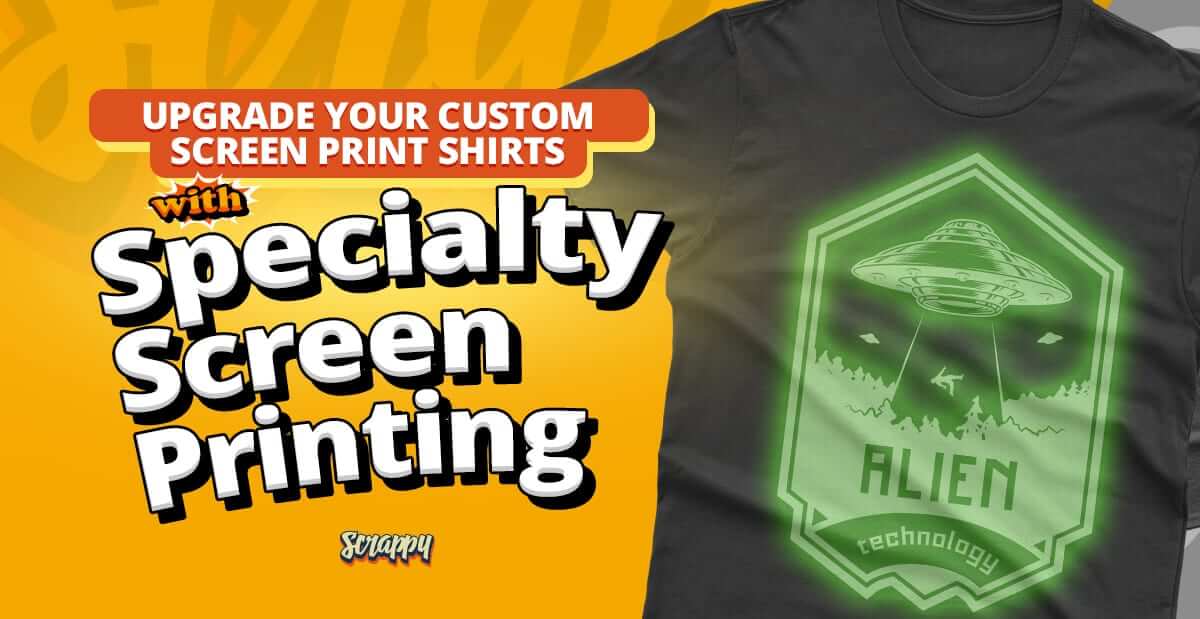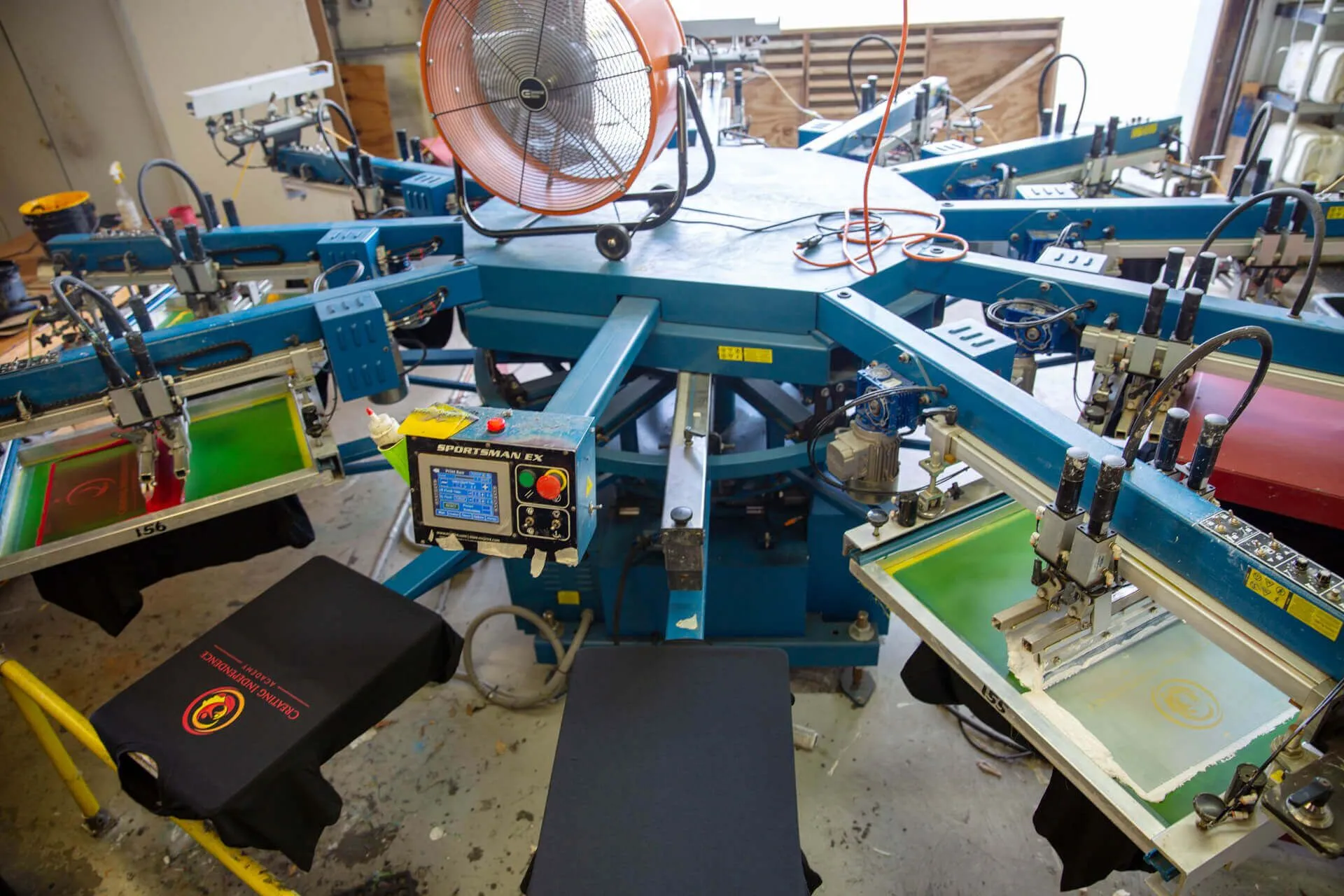High-End Silk Screen Printing for Premium Garments
Wiki Article
Screen Printing Uncovered: Everything You Need to Understand About Tee and Garment Printing Methods
Screen printing is a remarkable technique that combines art with strategy, using unlimited opportunities for creativity. Prepared to discover the necessary aspects that make display printing an art type?
The Fundamentals of Screen Printing: How It Functions
When you plunge into display printing, you'll find it's both a science and an art. At its core, display printing entails producing a stencil, or screen, that allows ink to pass via only in certain locations.Setting the screen over the fabric, then utilize a squeegee to press ink through the screen onto the garment. Each step is important, and understanding them will certainly raise your screen printing skills, changing basic garments right into unique, meaningful items.
Sorts Of Screen Printing Methods
Once you comprehend the basics of screen printing, it's time to discover the various methods that can raise your styles. One prominent method is conventional display printing, where ink is pushed through a stenciled screen. This strategy is wonderful for bold, vivid shades. After that there's water-based ink printing, which supplies a softer feeling and is environment-friendly, yet it needs a different method to healing.An additional choice is plastisol printing, recognized for its sturdiness and dazzling shades, making it a favored for several brand names. Experiment with halftone printing to produce slope impacts and intricate layouts.
Vital Devices for Display Printing
To achieve sensational results in display printing, having the best devices is essential. You'll require a tough screen printing frame, which holds the mesh that transfers your layout onto the garment. Next off, buy top quality squeegees; these are essential for applying ink equally across the screen. You'll additionally need a good direct exposure system to produce your screens, as well as a washout cubicle for cleansing them after usage. A reputable heat resource, like a conveyor clothes dryer or heat press, is essential for curing your prints to guarantee durability. Do not forget an appropriate office, furnished with tables and storage space for your supplies. Ultimately, protective gear, such as masks and handwear covers, will certainly keep you safe from chemicals and inks. With the right devices, you'll be well on your means to creating professional-quality prints.Choosing the Right Inks and Products
When picking inks and products for screen printing, you need to consider the kind of ink that functions finest for your task. Think of textile compatibility to assure your layouts look last and excellent lengthy. Explore green ink alternatives to make your printing procedure much more sustainable.Types of Screen Inks
Selecting the right display ink is essential for achieving lively, sturdy prints that satisfy your task's needs. There are several types of display inks to examine. Specialty inks, such as glow-in-the-dark or metallic, can include distinct effects to your layouts.
Textile Compatibility Factors To Consider
Recognizing textile compatibility is important for achieving premium screen prints, especially because different products react distinctly to numerous inks. Always examine your inks on example textile to ensure they adhere properly and keep color honesty. Additionally, keep in mind that textile weight and structure can affect the last result, so picking the ideal ink and product combo is vital for your task's success.Eco-Friendly Ink Options
Eco-friendly inks are becoming a popular choice for screen printers who desire to reduce their ecological impact while maintaining high quality. When choosing inks, think about water-based inks, which are less unsafe and less complicated to cleanse up contrasted to standard solvents.In addition, look for inks made from eco-friendly sources, such as soy or vegetable-based options. By choosing the best inks and materials, you'll not just develop stunning designs but additionally add to a much more sustainable printing procedure. Make the button, and your prints will certainly reflect your commitment to the environment!
Preparing Your Layout for Display Printing

Submit Format Demands
To assure your layout looks vibrant and sharp on material, you'll require to pay close interest to submit format needs for screen printing. Make certain your layout has a clear history to avoid unwanted white sides on your prints. Maintain color modes in mind; CMYK is typical for screen printing, so transform your RGB designs accordingly.Color Splitting Up Techniques
Shade splitting up is a necessary action in preparing your design for screen printing, and understanding it can substantially improve your print high quality. You'll need to break your style into private shades, as each shade requires a different display during printing. Begin by recognizing all the shades in your design and create layers each. You can make use of software application like Adobe Photoshop or Illustrator to separate and separate shades properly. Be specific to conserve each layer as a different file, normally in a layout like TIFF or PSD. This precision not just check my blog assures precise color representation but likewise simplifies the printing process. By taking note of shade separation, you'll achieve dynamic and professional outcomes in your screen-printed garments.Resolution and Size
Accomplishing the finest lead to screen printing starts with guaranteeing your style has the right resolution and dimension. Preferably, your art work needs to be at the very least 300 DPI (dots per inch) for sharp, clear prints. Your final item may look pixelated and unprofessional. if you use lower resolution.When it concerns size, take into consideration the dimensions of your print area. Layout your art work to match the final print dimension, preferably developing it in the actual dimensions you'll be printing. In this manner, you'll prevent any unforeseen scaling concerns.
Always inspect your design in both vector and raster layouts. Vector graphics can be scaled without shedding high quality, making them perfect for screen printing. Preparing correctly will ensure your style looks amazing on every garment!
Step-by-Step Screen Printing Refine
Screen printing is a dynamic procedure that permits you to develop lively designs on numerous surface areas. To get started, you'll require a display, emulsion, and your chosen ink. Prepare your display by cleansing it thoroughly. Next, use the solution evenly and let it dry in a dark location. As soon as completely dry, subject your screen to light with your layout positioned on it, which will certainly set the solution where the light hits, producing a pattern - screen printing kit.After rinsing the unexposed emulsion, your display prepares. Set it up on your printing surface area and straighten your garment beneath it. Put ink onto the display and make use of a squeegee to push the ink with the pattern onto the fabric. Lift the screen carefully and allow the print dry. Ultimately, treat the ink making use of warm to assure durability. That's it! You have actually successfully display printed your layout.
Tips for Successful Screen Printing Projects
While you're diving into your screen printing jobs, keep in mind that preparation is essential to success. Beginning by collecting all your products-- inks, displays, squeegees, and garments. A clean work space helps avoid undesirable errors, so neat up before you this start.Next, verify your art work is high-resolution and properly sized for your garment. Test your display for correct exposure and clean it thoroughly to avoid spots. When blending your inks, comply with the supplier's guidelines to accomplish the right uniformity.
During printing, apply also stress with your squeegee for consistent results. Do not rush; take your time to confirm each print meets your criteria. After printing, let your garments dry completely before managing or packaging them.
Last but not least, constantly keep a sample of your benefit future recommendation. In this manner, you can examine your development and enhance your techniques with time. Delighted printing!

Often Asked Questions
Just how Lengthy Does It Require To Set up a Display Printing Task?
Establishing a display printing work normally takes about half an hour to an hour. You'll prepare the screens, mix inks, and readjust journalism. The moment differs based upon intricacy and experience, so stay arranged!Can I Publish on Various Textile Keys In Using the Same Method?
Yes, you can publish on different fabric types utilizing the exact same technique, but you'll need to change your setups and inks. Some fabrics absorb ink differently, so trying out assurances the most effective results for every material.What Are Typical Blunders to Stay Clear Of in Screen Printing?
When screen printing, prevent common blunders like using the wrong ink, disregarding appropriate exposure times, or skipping pre-press checks. Always evaluate your configuration and preserve tidy displays to assure high quality outcomes each time.How Can I Appropriately Clean and Keep My Display Printing Tools?
To appropriately clean and keep your display printing tools, you should frequently clean screens with suitable solvents, examine squeegees for wear, and ensure all tools are saved completely dry and dust-free. Uniformity avoids expensive repairs and boosts performance.Is Display Printing Eco-friendly Contrasted to Other Approaches?
Screen printing can be much more environmentally friendly than various other approaches, particularly if you make use of water-based inks and eco-conscious materials. By selecting lasting supplies and practices, you reduce waste and decrease your effect on the earth.Screen Printing Uncovered: Whatever You Need to Know Concerning Tee Shirt and Garment Printing Techniques
At its core, display printing includes discover this info here producing a pattern, or display, that allows ink to pass via only in specific locations. Setting the screen over the material, then make use of a squeegee to press ink via the screen onto the garment. One popular technique is traditional display printing, where ink is pressed via a stenciled display.When selecting inks and products for screen printing, you need to take right into account the type of ink that works ideal for your job.
Report this wiki page